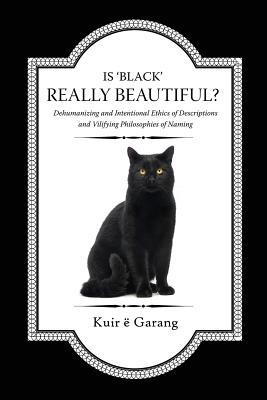Title: Is “Black” Really Beautiful?
Author: Kuir ë Garang
Publisher: The Nile Press
ISBN: 978-0991678945
Pages: 158, Paperback/Kindle
Genre: Philosophy/Sociology
Reviewed by: Ella Vincent, Pacific Book Review
Book Review
Kuir ë Garang asks a lot of provocative questions about race-and answers them- in his text, Is “Black’’ Really Beautiful? Garang posits that the labels of “Black’’ and “White’’ are meaningless and do more harm to race relations than good. Is “Black” Beautiful? is not about airing grievances about racism of the past: it’s about crafting a new vision of racial identity for the future.Garang has a degree in philosophy, and he presents many thought-provoking philosophies about race in his book. He argues that the terms “Black’’ and “White‘’ attach to much meaning to the colors and not enough to culture, especially the rich culture of African countries. Garang has special insight into the complexity of race and labels as a South Sudenese author. Garang advocates African-Americans calling themselves “Colored Americans’’ and Black Africans “Colored Africans.’’ He believes that these terms are more accurate than the term “ Black’’ because of the negative connotations attached to the color black in general. His philosophies about “blackness’’ also corresponds to his belief that the Eurocentric presentation of history present everything white as positive. Because of colonialism, Whites or “Colorless’’ people, as Garang calls them, have presented blackness as a static , unchanging description of people of African descent.
Garang argues that race should not be reduced to color. He writes, “Color is only a description and is most subjectively perceived…In the end, it’s the African who is beautiful, not ‘blackness’. Garang offers a revolutionary view of race and culture with this assertion. His academic writing is perfect for sociology or philosophy classes or any reader who wants to deeply analyze race relations. Garang believes that if people of African descent define themselves outside of Eurocentric definitions and labels, they can start to overcome the legacy of oppression they have suffered under for centuries.
Readers will be encouraged to think differently about such labels as “ Black’’ and “ White’’ in this modern era. Garang will also encourage readers to contemplate how the presentation of history can be changed if African people challenge Eurocentric ideas and take pride in their heritage free from any labels. In the end, Garang doesn’t advocate creating different races or labels. He wants readers to celebrate their individuality separate from any race. As Garang writes, “people’s dignity and sense of humanity shouldn’t be inseparably linked to any given color.’’ Garang’s book will definitely be a much-needed conversation starter about race, identity, and culture.



Follow Us